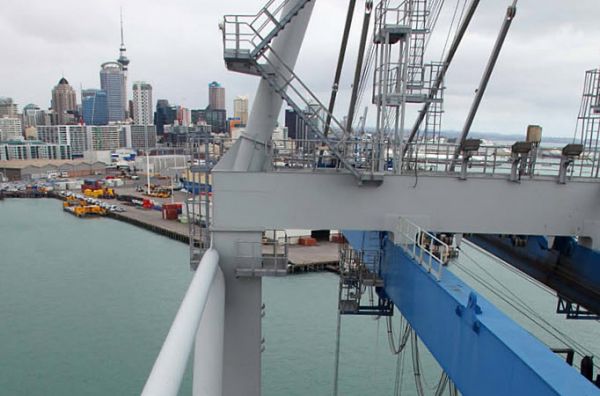
Lifting two end-to-end 20ft containers as one
A retrospective case study about a project completed in 2010. Figures quoted and claims made were accurate at the time of completion.
Client: Ports of Auckland
Industry: Logistics
Project: Maximising container lifting and unloading operations
To help Ports of Auckland boost productivity, we developed the world’s first system for simultaneously lifting twin 20ft containers from the decks of ships with midlock fittings.
The client: Australasia’s most efficient container terminal operation
Covering two seaports, an inland port as well as road and rail links, Ports of Auckland is New Zealand’s largest container port. The container terminal houses the country’s biggest ship to shore (STS) container crane and straddle carrier fleet, which operates 24 hours a day, seven days a week. Approximately 720,000 containers are handled here each year – equating to nearly 2,000 containers per day. Most of these are 20ft containers (60%) with the rest made up of 40ft containers.
The challenge: simultaneously lift two end-on-end 20-foot containers with midlocks
With such a mass of containers coming through, Operations Engineer John Miller turned to CNC to find a solution that would allow Ports of Auckland to simultaneously unload two 20ft containers from 40ft slots on the decks of ships with midlock fittings. “This has been tried in other parts of the world – but it has never actually been achieved,” he says. “We wanted to make it work with our existing equipment, despite the fact that the container fittings didn’t seem to allow twin lifting.”
CNC’s solution: provide expertise and software to customise container cranes
The development process involved rigorous testing, data collection and data analysis. “These are the skills that CNC brings to the table. They apply a structured methodology to refine and optimise production processes,” says John. “Their ability to take production type technologies and apply them to another industry is a real strength that sets them apart from other companies.”
Through their specialist engineering services and the application of Siemens automation products, CNC enabled Ports of Auckland to optimise their existing equipment. As John puts it: “CNC provided the technical expertise and software to customise our hardware. They’ve successfully completed the project and we can now utilise their technology. Our workers fully buy into it as the twin lifting and its automated container unlocking system makes their work easier and safer.”
The result: Container terminal productivity improvement
“The Twin Deck 40 is a significant breakthrough,” says John. “We can now twin out a large proportion of the containers, which increases our productivity. We’re also able to use more cranes on a ship, as the cranes’ movements don’t restrict each other.”
John concludes: “CNC helped us unlock our equipment’s potential, giving us a true competitive advantage in the marketplace. Shipping companies like to use our ports as we can service and turn their ships around quicker than other ports.”




